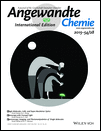Pd–Pb Alloy Nanocrystals with Tailored Composition for Semihydrogenation: Taking Advantage of Catalyst Poisoning†
We thank the Ministry of Education Singapore (Grant no. R279-000-391-112) and the Singapore National Research Foundation (Grant no. R279-000-337-281) for financial support.
Graphical Abstract
Abstract
Metallic nanocrystals (NCs) with well-defined sizes and shapes represent a new family of model systems for establishing structure–function relationships in heterogeneous catalysis. Here in this study, we show that catalyst poisoning can be utilized as an efficient strategy for nanocrystals shape and composition control, as well as a way to tune the catalytic activity of catalysts. Lead species, a well-known poison for noble-metal catalysts, was investigated in the growth of Pd NCs. We discovered that Pb atoms can be incorporated into the lattice of Pd NCs and form Pd–Pb alloy NCs with tunable composition and crystal facets. As model catalysts, the alloy NCs with different compositions showed different selectivity in the semihydrogenation of phenylacetylene. Pd–Pb alloy NCs with better selectivity than that of the commercial Lindlar catalyst were discovered. This study exemplified that the poisoning effect in catalysis can be explored as efficient shape-directing reagents in NC growth, and more importantly, as a strategy to tailor the performance of catalysts with high selectivity.





